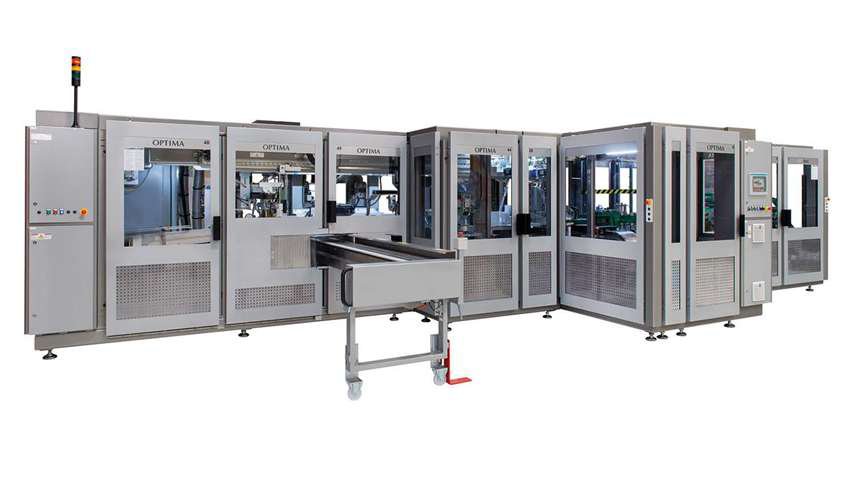Solution
With 95% of its machines already benefiting from the deployment of Allen-Bradley® products from Rockwell Automation, the move over to an iTRAK solution was a natural progression for Optima.
The iTRAK solution comprises multiple movers running on straight and curved paths, all of which can be independently controlled; instantly removing the limitations of fixed-pitch belt systems. Its highly innovative capabilities combine both linear and rotary motion, resulting in a flexible, fully integrated solution that can increase production throughput, reduce maintenance and overall machine size and, in this instance, slash machine changeover times.
The iTRAK system is part of a Rockwell Automation® Integrated Architecture® solution, which is used to both actuate and control the majority of the machine’s primary functions. At the heart of the automation infrastructure is an Allen-Bradley ControlLogix® programmable automation controller (PAC) working in conjunction with an Allen-Bradley PanelView™ Plus 7 operator interface. In addition to the iTRAK servo solution, the machine deploys a number of more-traditional servo motors and Allen-Bradley Kinetix® 6000 multi-axis servo drives. These servo solutions are used for a number of steps and functions, including pushing the diapers/nappies into the packs, driving the belts to move the products between stations, the turntables, the two product compression steps, product positioning, bag welding, bag extraction and final movement to the take-out conveyor.
An EtherNet/IP network reduces overall wiring on the machine and also offers easier integration with factory and office communication systems and access to the Connected Enterprise.
In operation, individual nonwoven products are taken from the manufacturing machine by the stacker and then counted and grouped into standard sequences. The high-speed stacker provides the first compression step, before a pusher transfers the separate product stacks to the handling unit that is connected to the bagger. The stacks are compressed again and are turned around and positioned either as layers or rows and transported onto the bagger.
In the bagger, foil bags are fed in and the product stacks are forwarded to the main compression process. A pusher loads these product stacks into the iTRAK system where they are then moved and positioned individually using the iTRAK movers and pushed into the bags. The bags are then sealed and forwarded for further processing, such as secondary packaging.

